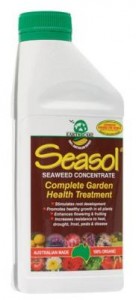Dr Wilson Lennard on Backyard Aquaponics and Adding Nutrients
There seems to be a unusual level of interest in people tinkering and building backyard aquaponics systems around the world. What do you make of all this?
From my limited experience with the backyard industry, I see two major users:
- people who want a system simply to grow vegies for themselves (and a few fish)
- people who are attracted to 1/ above, but are also attracted to the technology (the tinkerers)
This second group seems to contain the people who are more interested in the technology itself and strive for improvements in their home systems. I am sure there are people out there with a wealth of knowledge in making backyard systems work really well. Making something yourself is also the way I would do it as that is what interests me too; I just add in all the nerdy science stuff! I think it is good and provides a broad knowledge base and shows there are many ways to be successful with aquaponics.
I am also sure it is a lot of fun to tinker in your backyard on the improvements you wish to try on your aquaponic system. As I say, I essentially do the same thing, I just build bigger systems and include a bit more nerdy science so I can predict it all a bit more.
You’ve tested a number of kits systems from the two main Aquaponic kit manufacturers in Australia. In general, how did you find the quality and build?
I haven’t tested any kits at all. I have run some of the designs through my backyard design tool so i can predict and test what the best level of operation in terms of the required fish biomass is to meet the nutrient requirements of the attached media bed. I have used modified UVI fish feed input to growing area ratio’s for this. However, I should also state that my approach to commercial aquaponics uses far less fish feed per unit area than other approaches.
Many backyarders may agree with this, as they seem to use low fish feed input numbers as well and have success. So, the model was designed for newbies to aquaponics so they had some hard predictable numbers to work by so they would increase their chance of success. I have seen the build quality of some and it seems fine to me; it is pretty hard to stuff up tanks and plastic plumbing now a days really, so build quality should be good at an affordable price, which as i say, it appears to be.
What basic advice would you give newcomers to Aquaponics looking for sound practical advice?
My advice is simple to anyone; LEARN HOW TO LOOK AFTER FISH PROPERLY! People seem to put little emphasis on fish as they really want the vegies grown. However, keeping fish correctly and good water quality maintenance and control is essential to basic aquaponic operation and leads to ease with growing plants. I knew little of hydroponic plant culture before I started my research, but had a lot of early success with the plants and I think that was because I have an aquaculture background and know how to look after fish correctly. I see too many backyard systems with fish in poor health, or not growing, or not eating etc…and this all is because basic fish husbandry isn’t understood. If you are going to keep fish then you have a responsibility to look after them the best you can; you are responsible for their quality of life, whether you end up eating them or not, so the only way to do that is to make sure you know what you are doing. Basics like pH and conductivity testing and buffering aren’t even done by many back-yarders who just say that “the fish are still alive, so all is fine” This is a lazy attitude I think and shows little care for the fish.
Once the fish are sorted out, the plants take care of themselves and generally require little effort. Basics are:
- Test pH 4 times per week
- Buffer the water back to the required pH using proper Potassium and Calcium buffers so plant nutrient requirements are met.
If you do this, there is also no need for things like Seasol or Maxicrop, as the plants will always get all they need. I am also aware that people are being told to add common salt to their systems to combat fish disease and parasites. If you look after the water correctly, fish rarely get sick and so salt isn’t required. If you need to add salt at ANY stage, there is a good chance you aren’t looking after your fish correctly and they are in bad health and therefore, susceptible to disease and parasites. People also get told to add shell grit or oyster shell to their grow beds to control pH. When I test the water, it is at pH=8 or above! If you add these to your media you have zero control over the outcomes, and again, i think this is a lazy approach. It isn’t required. I recently saw a system in Melbourne, very nice off the shelf job and I thought what a reasonable price for the set up. BUT, the owner added oyster shell (apparent forum advice) and couldn’t control the pH. Bad advice! I believe as he couldn’t control anything and was at the whim of the system as to how it performed.
I know it is hard, but don’t believe everything you are told or read. Its not always the best advice. The issue I think is that people at home try things and it works, so they post the outcomes and suddenly it becomes gospel, even though there is no scientific basis or support and it hasn’t been proven by anyone else. Not everything that works in one system will work for everyone else and it needs testing and verification before it is more widely adopted.
You advocate NOT using Seasol or Maxicrop (Seaweed Extract) in an Aquaponics System. Why is that?
Seasol or Maxicrop or any other complete, and especially sea-based plant suppliment shouldn’t be added to aquaponic systems for technical reasons (ie: Sodium salt build up which eventually kills plants), but also for philosophical reasons. I see too many backyard systems sold in Australia where people are told to add Seasol regularly. Sure, this makes for good plants initially, but can be a cause for eventual system crash and failure. Seasol has a very high sodium content (from the salt in the water). There is nothing in a freshwater aquaponcis system which requires anywhere near the sodium levels that occur when Seasol is added. In addition, if Seasol addition continues then this sodium just accumulates (the point of aquaponics is to not change any water, so if something isn’t used by fish or plant, it builds up and doesn’t stop building up) and this will eventually lead to plant loss and a lowered plant production rate as it affects plant metabolism and growth and nutrient uptake. Salt addition (as recommended by some) will do the same thing. The thing I like the least is that this Seasol/Maxicrop addition essentially also makes these systems effectively hydroponic systems with a few fish swimming around in them, with the plants ALL growing from the Seasol and the fish contributing zero to the plant growth. If you want to add this stuff, leave the fish out of it and accept it isn’t a true aquaponic system, but as I say, a hydroponic system with a few fish swimming in it. To back this up, i recently went to a system in Melbourne where the person was told to add Seasol once a week. There were not enough fish in the system to feed all the plants via fish waste and the person admitted that the fish weren’t even eating and were regularly dying, but apparently, this is still an aquaponic system? I will say it again, if you manage and maintain the system correctly and use a proper testing approach and a proper buffer pH control approach, there is zero need for Seasol or anything else at any stage in a system. The whole idea is to maximise the use of the fish waste for plant growth; adding Seasol just counteracts this and so removes the whole point of adding fish in the first place.








What was with the cliffhanger yesterday – where’s the next part of the movie?!?!?!?!
Hi Wil, Its not complete yet. Check back later.
Bravo, Dr. Lennard! I especially agree with your philosphy on additives. The goal should be how simple, and subsequently how close to a natural ecosystem, we can make an aquaponics system. If the system is well designed, the right amount of fish are added, the beds the right depth, and pH kept in range then everything will balance on it’s own. I haven’t even had to adjust pH in over a year. We humans need to learn when to bug out!
One thing that concerns me about aquaponics is the nutrient density of the food as opposed to organic soil grown food. By adding some Seasol I would think it would provide a broad range of trace elements and minerals to the plants which I can’t see them getting from fish who are fed only on pellets. Has Dr Lennard done any research into this area?
I’ve been running (2) 4’x8′ raft beds for the last two months, and have had massive Iron deficiencies – the Maxicrop plus Iron cleared them up almost completely in two days. For a new system it’s been wonderful – still amazed at how fast the chlorosis disappeared.
Wonderful interview! can’t wait to read more!
Excellent interview, You hit all the spots needed to be expressed. I appreciate Dr. Lennard giving his knowledge for backyard people. There is so much flying around out there people are in a state of confusion. How is one to know what is true. I believe aquaponics in the backyard will become vital in the future and we need to do it right. Mahalo.
I used a bit of seasol when I started out but only add it every now and then. I’ve never had a problem with salt building up in the system. Sea salt is also added to the system and the plants use it up over time.
Where does Dr Lennard recommend keeping the EC readings?
Thanks
Dr. Lennard,
I am currently experiencing a bit of chlorosis and was curious as to your experience with Yates chelated iron in an aquaponic system.
Best regards,
Emilie